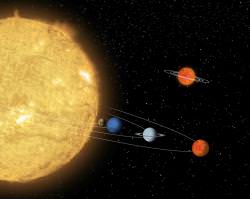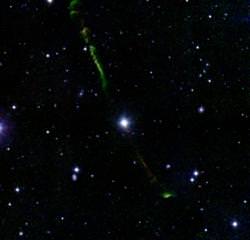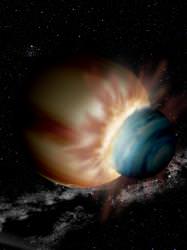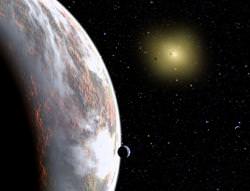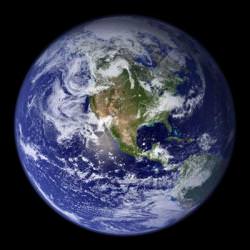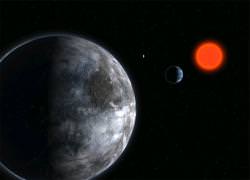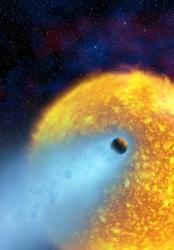Before Neptune was discovered in the 1840s, astronomers predicted its location based on how it was interacting with Uranus. Once again, this technique was used to find a planet, but this time orbiting a star 200 light-years away. It turns out planets like to be packed together in star systems. Find a gap, and you might have discovered a planet.
Astronomers from the University of Arizona in Tucson announced their findings today at the meeting of the American Astronomical Society in Austin.
Rory Barnes, a post-doctoral associate at UA’s Lunar and Planetary Laboratory, and a team of colleagues studied the orbits of several planetary systems. They found that the planets are generally packed as close together as possible without actually gravitational disrupting each other – if you get them any closer, planets will be kicked inward or outward from the system. This is called the Packed Planetary Systems hypothesis.
“The Packed Planetary Systems hypothesis reveals something fundamental about the formation of planets,” Barnes said. “The process by which planets grow from clouds of dust and gas around young stars must be very efficient. Wherever there is room for a planet to form, it does.”
The researchers studied the orbits of several planetary systems and noticed that there was a big gap between two planets orbiting the star HD 74156. So if their hypothesis was correct, there should be a planet orbiting in between the gap.
“When I realized that six out of seven multi-planet systems appeared packed,” Barnes said, “I naturally expected that there must be another planet in the HD 74156 system so that it, too, would be packed.”
With this prediction in hand, a team of astronomers from the University of Texas made careful observations of the HD 74156 system, looking for the theorized planet.
And guess what… they found it!
With this prediction confirmed, Barnes and his colleagues also predicted that there should be another planet orbiting around 55 Cancri. This was found by a different team of astronomers.
The researchers have predicted a specific planet orbiting a third star, but so far they haven’t found it.
But as more planetary systems are discovered, the Packed Planetary Systems hypothesis will fill in the holes. Astronomers will know where to look for more planets.
Original Source: University of Arizona News Release

